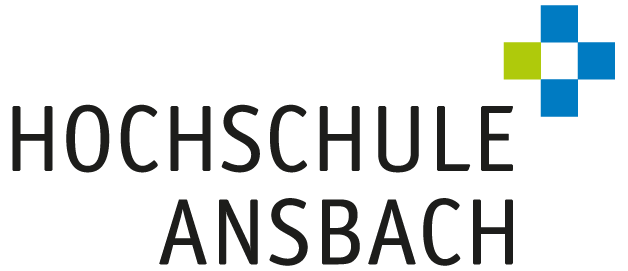
Search of Dark Matter Annihilation in the Galactic Centre using the ANTARES Neutrino Telescope
Adrián-Martínez, S.; Albert, A.; André, M; Albert, A.; Ardid, Miguel; Aubert, J.-J.; et al., .; Geißelsöder, Stefan; et al., . (2015)
Adrián-Martínez, S.; Albert, A.; André, M; Albert, A.; Ardid, Miguel; Aubert, J.-J....
Journal of Cosmology and Astroparticle Physics 10(2015), 068.
DOI: 10.1088/1475-7516/2015/10/068
Peer Reviewed
Visibility of Performance. Ein Beitrag zur Ermittlung der Güte von Performance-Measurement-Systemen
Pidun, Tim (2015)
Dissertation. TU Dresden.
ANTARES constrains a blazar origin of two IceCube PeV neutrino events
Adrián-Martínez, S.; Albert, A.; André, M; Anton, G; Ardid, Miguel; Aubert, J.-J.; et al., .; Geißelsöder, Stefan; et al., . (2015)
Adrián-Martínez, S.; Albert, A.; André, M; Anton, G; Ardid, Miguel; Aubert, J.-J....
Astronomy and Astrophysics 576, L8.
DOI: 10.1051/0004-6361/201525670
Open Access Peer Reviewed
An Empirical Analysis of System-generated Data in Location-based Crowdsourcing
Durst, Carolin; Grottke, Michael (2015)
Wirtschaftsinformatik Proceedings 2015, 63 | 933-947.
Modellunabhängige Suche nach Neutrinoquellen mit dem ANTARES Neutrinoteleskop
Geißelsöder, Stefan (2015)
Verhandlungen der Deutschen Physikalischen Gesellschaft e.V.. Wuppertal 2015.
Zielvereinbarungen bei Ärzten als Steuerungsinstrument des Klinikmanagements: eine empirische Studie in ausgewählten Kliniken in Deutschland
Fehr, Stefanie (2015)
Wirtschaft & Recht, Band 23, Sierke Verlag, Göttingen.
Kühlungsoptimierung von elektronischen Komponenten mittels Strömungssimulation
Scheiderer, Bernd; Schlüter, Wolfgang; Ringleb, Ansgar (2014)
ASIM-Workshop STS/GMMS 2014. Treffen der ASIM/GI-Fachgruppen: Simulation technischer Systeme. Grundlagen und Methoden in Modellbildung und Simulation. Tagungsband. Reutlingen-Rommelsbach, 20.-21.02.2014. Wien: ARGESIM/ASIM, 31-36.
Open Access
Entwicklung einer Fertigungssimulation für einen Schmelz- und Druckgussbetrieb zur Steigerung der Energieeffizienz und Prozesssicherheit
Hirschberg, Sven; Ringleb, Ansgar; Schlüter, Wolfgang (2014)
Tagungsband ASIM 2014. 22. Symposium Simulationstechnik. HTW Berlin, 03.-05.09.2014. Wien: ARGESIM/ASIM, 117-124.
Open Access
Thermische Simulation von Batteriesystemen mittels CFD sowie deren Vergleich mit einem vereinfachten Simulationsmodell
Scheiderer, Bernd; Schlüter, Wolfgang (2014)
Tagungsband ASIM 2014. 22. Symposium Simulationstechnik. HTW Berlin, 03.-05.09.2014. Wien: ARGESIM/ASIM , 283-290.
Open Access
SoundTwist - ein interaktives Audiospiel
Hall, Julia; Beck, Florian; Pöpel, Cornelius (2014)
Forum Medientechnik – Next Generation, New Ideas. Beiträge der Tagung 2014 an der Fachhochschule St. Pölten. Glückstadt: Hülsbusch (Multimedia) , 177-188.
Constraining the neutrino emission of gravitationally lensed Flat-Spectrum Radio Quasars with ANTARES data
Adrián-Martínez, S.; Albert, A.; André, M; Anton, G; Ardid, Miguel; Aubert, J.-J.; et al., .; Geißelsöder, Stefan; et al., . (2014)
Adrián-Martínez, S.; Albert, A.; André, M; Anton, G; Ardid, Miguel; Aubert, J.-J....
Journal of Cosmology and Astroparticle Physics 11 (2014), 017.
DOI: 10.1088/1475-7516/2014/11/017
Peer Reviewed
ElectroBody - Der menschliche Körper als Musik-Controller
Lubczyk, Martin; Kirschner, Michael; Pöpel, Cornelius (2014)
Forum Medientechnik – Next Generation, New Ideas. Beiträge der Tagung 2014 an der Fachhochschule St. Pölten, Verlag Hülsbusch, Glückstadt, 189-201.
Grenzenlose Zusammenarbeit: Mobile Crowdsourcing mit Streetspotr
Durst, Carolin; Utzt, Dorothea (2014)
KnowTech 2014, 16. Kongress zum Wissensmanagement und Social Media in Unternehmen und Organisationen. Hanau, 16.10.2014.
Untersuchungen zur mikrobiellen Primärbesiedelung unter definierten Bedingungen in einem Bioreaktor zur leichteren Reinigung von Kunststoffoberflächen durch verringerte Haftkraft
Häfner, Philipp; Reimann, Hans-Achim (2014)
10. THGOT Thementage Grenz- und Oberflächtechnik mit 4. Optik-Kolloquium, 02.-04.09.2014, Leipzig, INNOVENT e.V..
A Search for Time Dependent Neutrino Emission from Microquasars with the ANTARES Telescope
Adrián-Martínez, S.; Albert, A.; André, M; Anghinolfi, M; Anton, G; Ardid, Miguel; et al., .; Geißelsöder, Stefan; et al., . (2014)
Adrián-Martínez, S.; Albert, A.; André, M; Anghinolfi, M; Anton, G; Ardid, Miguel...
Journal of High Energy Astrophysics 3-4, 9-17.
Peer Reviewed
UV Laser for Micro- and Marking Applications
Genter, P; Diehl, H; Höfer, S; Kugler, N; et al., ..; Sover, Alexandru; et al, . (2014)
Deutsche Gesellschaft für Materialkunde (German Materials Society), Session – UV-Laser Processing, Darmstadt, September 2014.
Substitution of a resource consumptive, hydrous pre-treatment and cleaning process by an innovative plasma process
Andexinger, Christian; Häfner, Philipp; Reimann, Hans-Achim (2014)
Applied Research Conference 2014. ARC 2014. 5th July 2014. Ingolstadt. Herzogenrath: Shaker, 325-328.
Application of DSBM on Simulated EEG Data
Öchsner, Bernd; Weeger, Nicolas; Uhl, Christian (2014)
Applied Research Conference 2014. ARC 2014. 5th July 2014. Ingolstadt. Herzogenrath: Shaker, 374-380.
Windabweiser sowie Verfahren zur Herstellung eines Windabweisers (DE 10 2013 000 073 A1)
Wirthwein, Marcus; Sover, Alexandru; Leuchs, Stefan; Möller, Andreas (2014)
Deutsches Patent- und Markenamt.
Simulation des Materialflusses in Aluminium-Druckgussbetrieben mittels MATLAB
Hirschberg, Sven; Ringleb, Ansgar; Schlüter, Wolfgang (2014)
MATLAB EXPO 2014. MathWorks. München, 09.07.2014.
Servicestelle für Forschung und Transfer (SFT)
Hochschule Ansbach
Residenzstr. 8
91522 Ansbach
Betreuung der Publikationsseiten
Iris BoynyT 0981/4877-341
iris.boyny[at]hs-ansbach.de
